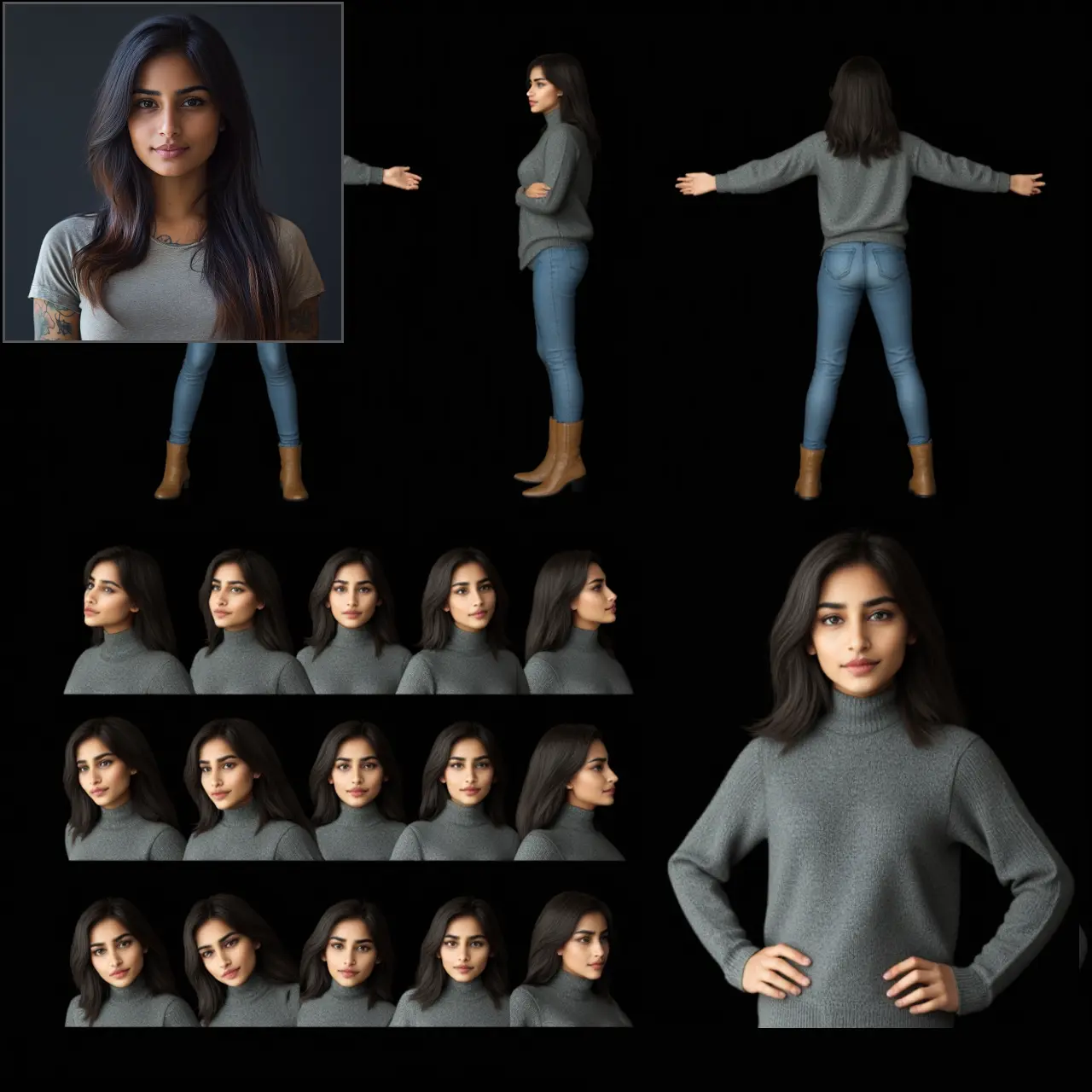ComfyUI Node: GLSL (JOV) 🍩
GLSL (JOV) 🍩
CategoryJOVIMETRIX 🔺🟩🔵/CREATE
amorano (Account age: 5496days) Extension
Jovimetrix Composition Nodes Latest Updated
2025-03-28 Github Stars
0.34K
How to Install Jovimetrix Composition Nodes
Install this extension via the ComfyUI Manager by searching for Jovimetrix Composition Nodes- 1. Click the Manager button in the main menu
- 2. Select Custom Nodes Manager button
- 3. Enter Jovimetrix Composition Nodes in the search bar
Visit ComfyUI Online for ready-to-use ComfyUI environment
- Free trial available
- 16GB VRAM to 80GB VRAM GPU machines
- 400+ preloaded models/nodes
- Freedom to upload custom models/nodes
- 200+ ready-to-run workflows
- 100% private workspace with up to 200GB storage
- Dedicated Support
GLSL (JOV) 🍩 Description
Execute custom GLSL fragment shaders for image generation and effects with high flexibility and creative control.
GLSL (JOV) 🍩:
The GLSL (JOV) 🍩 node is designed to execute custom GLSL (OpenGL Shading Language) fragment shaders, enabling you to generate images or apply effects with high flexibility and creative control. GLSL is a high-level shading language used extensively in graphics programming for rendering images and animations. This node leverages GPU acceleration to perform efficient computations, allowing for the rapid generation of complex visual effects in real-time. By integrating this node into your image processing pipeline, you can achieve sophisticated shader effects that enhance your artistic projects.
GLSL (JOV) 🍩 Input Parameters:
TIME
This parameter represents the time variable in seconds, which can be used to create time-dependent effects in your shader. The default value is 0, with a step of 0.001, a minimum value of 0, and a precision of 4 decimal places.
BATCH
This parameter specifies the number of frames to process in a batch. It allows you to render multiple frames in one go, which is useful for animations. The default value is 1, with a step of 1, a minimum value of 0, and a maximum value of 262144.
FPS
This parameter sets the frames per second for the rendering process. It controls the speed of the animation or the rate at which frames are generated. The default value is 24, with a step of 1, a minimum value of 1, and a maximum value of 120.
WH
This parameter defines the width and height of the output image as a vector of two integers. The default value is (512, 512), with a minimum size defined by MIN_IMAGE_SIZE and a step of 1.
WAIT
This boolean parameter determines whether the node should wait between frames. If set to True, the node will pause between frames, which can be useful for synchronizing with other processes. The default value is False.
RESET
This boolean parameter allows you to reset the shader state. When set to True, it resets the time and other state variables, which can be useful for restarting animations. The default value is False.
FRAGMENT
This parameter takes a string containing the GLSL fragment shader code. It allows you to input custom shader code to define the visual effects. The default value is a basic shader program provided by GLSLShader.PROG_FRAGMENT, and it supports multiline input.
GLSL (JOV) 🍩 Output Parameters:
Image
The output of this node is an image generated by the GLSL fragment shader. The image reflects the visual effects defined by the shader code and the input parameters. It is returned as a tensor that can be further processed or displayed.
GLSL (JOV) 🍩 Usage Tips:
- Experiment with different
FRAGMENTshader codes to create unique visual effects. You can find many GLSL shader examples online to get started. - Adjust the
TIMEparameter to create dynamic, time-based effects. This is particularly useful for animations and interactive visuals. - Use the
BATCHparameter to render multiple frames at once, which can be helpful for generating animations or sequences of images. - Set the
FPSparameter according to the desired smoothness of your animation. Higher FPS values result in smoother animations but require more computational power. - Utilize the
RESETparameter to restart animations or reset the shader state when needed.
GLSL (JOV) 🍩 Common Errors and Solutions:
GLSL Compile Error
- Explanation: This error occurs when there is a syntax or semantic error in the GLSL shader code.
- Solution: Check the shader code for any syntax errors or unsupported functions. Ensure that the shader code is compatible with the GLSL version specified in the
PROG_HEADER.
Invalid Framebuffer Operation
- Explanation: This error can happen if the framebuffer is not set up correctly or if there is an issue with the texture binding.
- Solution: Verify that the framebuffer and textures are correctly initialized and bound. Ensure that the shader variables are properly updated before rendering.
Shader Program Link Error
- Explanation: This error occurs when the vertex and fragment shaders do not link correctly into a shader program.
- Solution: Ensure that both the vertex and fragment shaders are compiled successfully and that they are compatible with each other. Check the shader program log for detailed error messages.
Out of Memory
- Explanation: This error can occur if the GPU runs out of memory while processing the shader.
- Solution: Reduce the resolution of the output image or the complexity of the shader code to lower the memory usage. Ensure that unnecessary resources are freed up before running the shader.
GLSL (JOV) 🍩 Related Nodes
RunComfy is the premier ComfyUI platform, offering ComfyUI online environment and services, along with ComfyUI workflows featuring stunning visuals. RunComfy also provides AI Playground, enabling artists to harness the latest AI tools to create incredible art.


